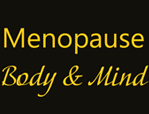Unsure where to start? Book your FREE 15 minute consultation now.
World Menopause Day
WELCOME… WELCOME… WELCOME!
I’m Tish from Menopause Body & Mind and today is a very exciting day for me! I’m writing my very first blog on WORLD MENOPAUSE DAY and feel one step closer to really helping all you menopausal women out there!
The theme this year is BONE HEALTH so what could be more relevant than a blog on this very important topic.
I sometimes feel the rest of our health gets forgotten amid our menopausal hot flushes, night sweats, brain fog… but if we sit with our heads in the sand pining for our pre-menopausal days, more things are just going to come up and bite us on the ass! So instead, let’s get prepared.
Have you noticed that you don’t seem to be as strong as you were? Well that’s because the older you get, the more bone tissue you lose. This is why osteoporosis and broken bones become problems as we age. Sarcopenia is also a new concept that incorporates the inevitable loss of muscle mass, muscle strength and performance as we age. When sarcopenia exists as well as osteoporosis, a woman’s risk of breaking a bone is greatly increased.
Bones
Bone mass peaks in our early 30s. The better your bone mass at this point, the more protection you will have from bone loss in menopause. From this point on, we start to lose our bone mass and bone loss is at its maximum during the menopause. Women at this stage can lose approximately 2% of bone density each year with the fastest rate of bone loss happening in the year before and 2 years after the last period. This is because levels of oestrogen (female sex hormone that helps keep bones strong) decrease. In addition, women tend to live longer so are more likely to live with age related lower bone strength and we have smaller bones. Bigger bones reduce the risk of broken bones.
That’s the bad news over – the good news is, that it’s never too late to do something about it.
It’s never too late…what can you do
Bone tissue is alive and constantly changes to ensure it’s as healthy as possible. You can help through:
- Nutrition – eat a balanced diet containing plenty of calcium and protein (recommended daily intake of calcium post menopause = 100mg)
- Vitamin D helps your body absorb and use calcium, which improves bone strength (recommended daily intake = 1000IU. Get from sunlight exposure 2-3 times per week in summer. Oct-March consider taking supplements
- Regular varied exercise, including exercise that helps to strengthen muscles and keep bones strong and healthy throughout life.
- HRT can be considered for minimising bone loss – even for just a few years around the time of menopause when bone loss is at its height.
- Calcium Thieves: smoking, alcohol and processed food – try and keep these to a minimum.
- Stress management – bone tissue is responsive to stress and relies on good nutrition and blood flow.
Exercise that’s good for your bones & Muscles
Bones stay strong if you work them. Most effective exercise is:
- weight-bearing exercise with impact – you are weight bearing when you are standing so impact involves adding a jolt through your skeleton (from walking to physical activity, including star jumps)
- muscle strengthening exercise – when muscles pull on bones it gives your bones work to do. Bones then renew themselves and maintain or improve strength (weights, resistance bands, body weight press ups). Research studies have shown that progressive resistance training is likely to be the best type of muscle strengthening exercise for bone strength. Exercise 2-3 days each week on non-consecutive days. The principle of bone density exercises is that you stress the bone, creating a micro trauma, but then allow it to recover to build new bone. If you just keep pushing it into a constant state of inflammation, you will reverse the benefits.
Thanks for reading my blog. I hope you’ve found it useful. Look forward to catching up soon.
Tish xx


